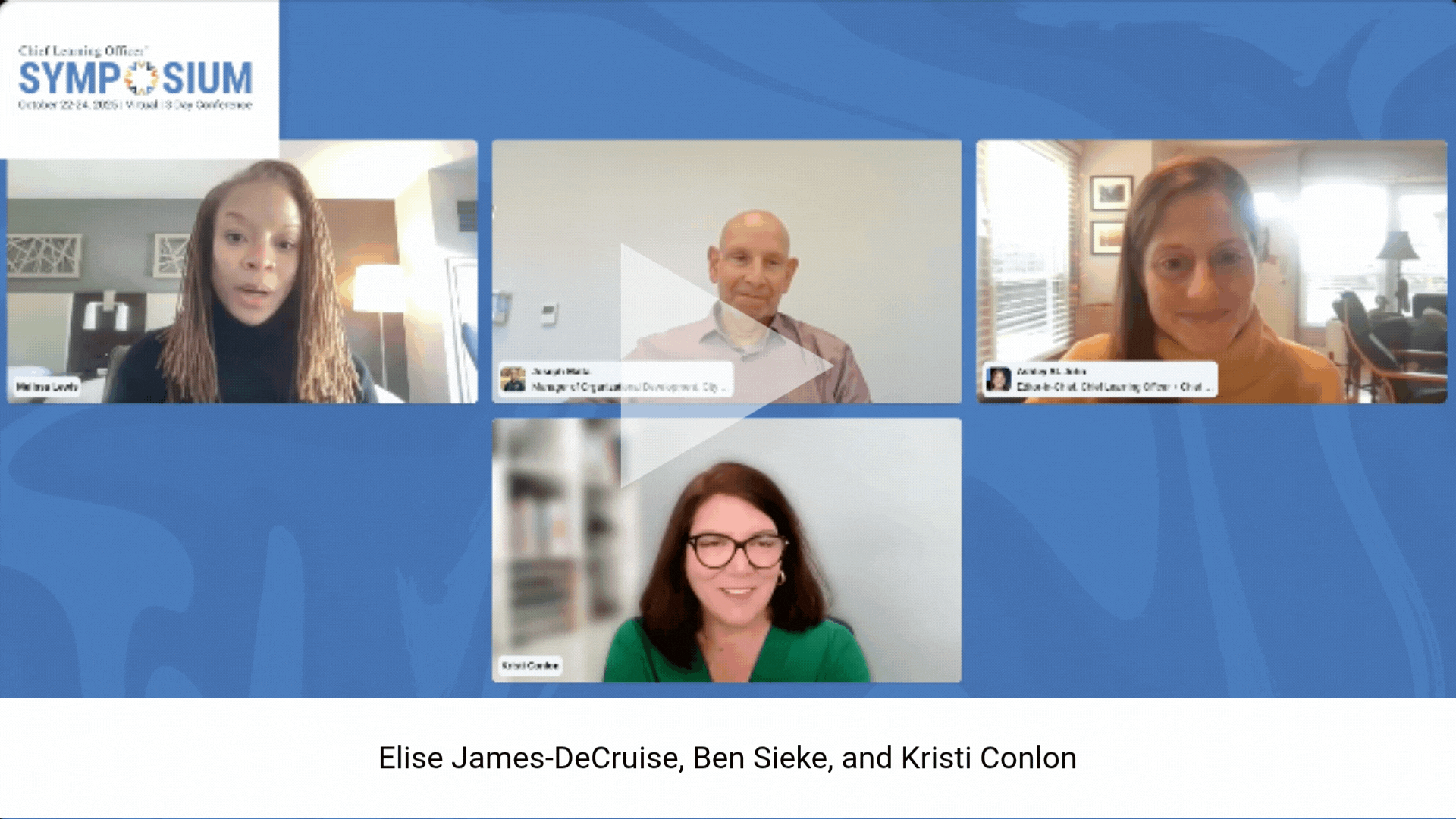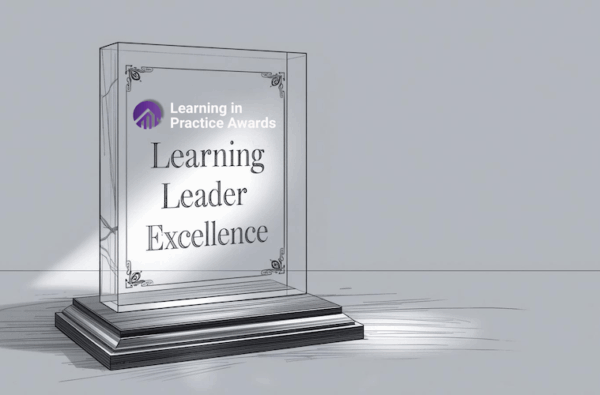Bite-sized learning can round out an organization’s overall strategy by enabling cost-effective peer-to-peer knowledge sharing across the enterprise. Despite what skeptics say, it’s here to stay.
An employee at a wind turbine company stumbled upon a way to save his company approximately $3 million to $5 million a year using enterprise microblogging technology Yammer.
He recommended to the company president that every maintenance or repair person who had to suit up in mountain-climbing gear to work on the 60- to 70-foot-tall windmills should receive a smart phone. That way, anyone who had an urgent question could simply punch it into Yammer and receive an almost instantaneous user-generated response.
This account, cited by Jay Cross, chairman of the Internet Time Alliance, is one example of how organizations are recognizing the value of microsharing or microblogging for learning. More and more learning leaders today are leveraging enterprise microlearning tools, such as Twitter and Yammer, to further their organizations’ business objectives.
Tenets of Microlearning
Microlearning is “discrete chunks of information or skill-based knowledge that can be delivered in short bursts of time,” said Julie Clow, manager of learning and organizational development at Google Inc.
“If you look at the broad spectrum of things that people need to know to do their job, then you’re going to have some big things and you’re going to have a very long tail of little pieces of knowledge and information that’s relevant to their job in different contexts,” she said.
“There’s a place for the very big, high-quality training programs, but as you move down that tail to the long-tail needs of the organization, there are so many different content areas that people need to become specialists in, and the further down you go in that tail, the fewer people it becomes relevant for,” Clow said. “Microlearning pieces are quick to create and quick to distribute, so if we can engage the organization in doing that and really engage the microlearning format to teach each other, then what you’re doing is rounding out your learning strategy.”
Another use for enterprise microlearning is to expose employees to useful chunks of knowledge during periods when they may otherwise be unoccupied, she explained.
One example of this at Google is the use of one-pagers known as “testing on the toilet” — consisting of topics such as testing for code — that are placed in restrooms in the engineering buildings, or one-pagers titled “learning on the loo” that contain topics relevant to non-engineering employees.
“It’s just snagging little pieces of time that are idle for people and taking that opportunity to introduce them to something that could be helpful,” she said.
In addition, organizations often use microsharing technology for online courses or in-person events to obtain real-time feedback, respond to questions, redirect programs to render them relevant to program participants, and elicit ongoing conversation that may be marginally off topic but nonetheless important, said Marcia Conner, co-author of The New Social Learning and enterprise vice president for Pistachio Consulting.
It also helps to build rapport among participants that’s seemingly unnatural when everyone’s sitting, facing forward and being quiet.
“Organizations are using it to send reminders of formal programs that are coming up, announce new events that are happening, ask follow-up questions to courses and programs so that people can be reminded of key takeaways, or to challenge or reflect on what they’ve learned in their programs and within courses,” she said.
Learning in tiny chunks can be particularly valuable to learning leaders, Cross said.
“There are many times you don’t need a lecture or a chapter,” he said. “A lot of learning comes in the wrong-size packages, and if somebody’s got a good two-minute idea, if they bring people in, they’re going to have to pad it out where it’s at least half an hour because nobody goes anywhere for two minutes. But two minutes on the Web or 30 seconds on the Web makes a whole lot of sense.”
Whereas it’s natural for novices to get up to speed by taking classes for extended periods of time, it may not be the best long-term strategy for employees.
“After I’ve done that, I have no interest in going back to class; I’ve got the big picture, so what I’m looking for is just these knowledge nuggets that I’m missing,” Cross said. “It could be, ‘What’s the trick to doing this?’ [or] ‘How do I avoid the telephone tree at this company?’ It naturally tends to be smaller and smaller [pieces] of information, and the longer somebody’s on the job, often after they’re up to speed, the shorter the little bits of information they’re looking for because they know what they want.”
While more learning practitioners are now seeing its value, microlearning is hardly a new phenomenon.
“We’ve been communicating in short bursts all our lives and throughout civilization; what’s new is the technology that augments the process, allowing this sort of learning to happen across great distances with relative ease,” Conner said.
Leveraging Knowledge Nuggets in the Enterprise
Microlearning tools such as Twitter can create value for learning leaders whether used internally or externally.
Externally, individuals can use Twitter-like tools to keep track of industry trends by following thought leaders or specific topics, said Caroline Avey, director of innovative learning solutions at outsourcing firm ACS.
Such tools also can be used for learning within the enterprise. ACS leverages Yammer firm-wide in conjunction with course work. Approximately 20,000 to 25,000 employees around the world are enrolled in an online leadership development course, and microlearning tools enable people in remote locations to come together and share information.
“There are three webcast sessions, which is very helpful in getting people launched and engaged [in] online learning, [but] what was missing is how you apply leadership content within your role or region,” Avey said. “For example, coaching in the Far East is quite different than coaching in North America or, [on the] same topic of coaching, how you coach in a call center environment where they’re busy and online is quite different from a consultative skills environment, where the coach may be at a distance from the [individual being coached]. So even though you have great content in this course, being able to apply it to specific subgroups of learners and share how you’ve applied it to your job is something that we’ve done using Yammer.”
Similarly, Twitter can be used as a performance support tool, said Harold Jarche, principal of Jarche Consulting and partner at Internet Time Alliance.
“You’re connected to everybody else and you have this pervasive presence,” he said. “In other words, everybody is there; it’s open; it’s transparent — I put something up and I know that the 50 or so people that I work with have an opportunity to see it. I [can ask], ‘Hey, has anybody ever used this tool before?’ ‘Does anybody know anything about this new offering?’ or whatever, and usually with Twitter you get an answer pretty quickly.”
At Google, Clow works on a team called engEDU, which has done work to engage and enable engineers to create chunks of training for each other.
“If they have expertise in a particular area, then we’ve been trying to encourage them to teach other engineers about it — so taking us out of the equation and really just providing the tools,” she said.
“We’ve tried to make that easier [by giving] them different kinds of learning format options. So if they have a piece of knowledge they’d like to share, the question becomes, ‘What’s the best format for this?’” Clow said. “There are around 30 different learning formats that the team has come up with as being unique ways of delivering training to people, and many of them are in microlearning formats — some of them are online; some of them can be in person; it could be like a brown bag; it could be a two-minute video. That’s an example where we’re really leveraging microlearning formats to get engineers to contribute to the body of knowledge that’s out there.”
The role of the learning leader is more focused on helping employees find information rather than creating content, Clow said.
Microlearning, Major Qualms?
Learning leaders may harbor hesitations when it comes to implementing enterprise microlearning, many or all of which may be unfounded.
“One is the ease with which leaders believe that sharing in these small bursts is wasting time or a drain on organizational productivity,” Conner said. “While they can be abused, so can spending a lot of time talking with your neighbor at your desk, so can the telephone, so can surfing the Web.”
Instead, learning leaders should provide general guidelines or expectations regarding the purpose of microlearning.
“To clamp down so tightly on using these tools or prohibit them from being used at all prevents an opportunity to truly connect with information and people in a way that is very important to how we, as people, become productive,” Conner said.
Jack McGrath, president and creative director of Digitec Interactive, said tracking content is another concern that learning leaders often have when using microlearning tools.
“So people will associate microlearning with a less disciplined approach to development, managing and tracking. That could be a problem, but I think smart organizations are continuing to track microlearning.”
An additional factor that causes learning leaders to be wary of microlearning is the fear of employees posting inappropriate, irrelevant or incorrect content. Avey said the first two can be countered by having occasional executive involvement and introducing moderators who add value and steer conversation.
“In Yammer you use your real name, so it’s very much traceable back to you — it seems to be very self-governing, but as a safety caution, it’s wise to have a social governance policy in place,” she said.
Conner likens the experience to a giant rumor mill where inaccurate information eventually gets filtered out.
“We see examples of organizations when we ask: ‘How much information sharing is going on?’ they will say, ‘Yes, there is information that’s practically true or is out of date by now,’ but then other people chime in and say, ‘Here’s the right information,’” she said. “You’re always going to talk to people who have part of the story; the likelihood that false information will be rectified, will be corrected, is far greater when many people are contributing to the conversation.”
The Future of Microlearning
While the technologies that enable microlearning may evolve over time, the concept itself isn’t transient.
“Will Twitter in its current form or any of the enterprise microsharing tools exist as they are today in five years? Who knows? But the ability to communicate over long distances in very bursty ways is here to stay — it has been here throughout time,” Conner said. “We can see how valuable it is to organizational learning, so I don’t foresee that going away.”
While some microsharing tools may remain stand-alone, others may be built into other applications and will likely be part and parcel of enterprise tool sets.
“I’ll be shocked if we don’t see more microsharing capabilities built into more traditional education or learning systems that will allow peer-to-peer learning while networking and learning alone,” she said. “When you’re working through an e-learning program, it’s usually an individualized experience, but what if you were to also be communicating and learning with others who are going through that process with you? That would add a dimension that’s been sorely missing.”















